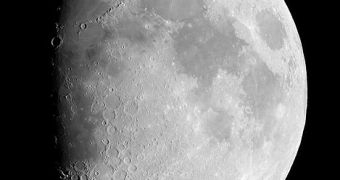The Japanese Space Agency (JAXA) is currently considering placing a robot on the Moon by 2020 at the latest, and an astronaut a decade later, officials have recently announced. The decision comes amidst great concerns that the country will lose the regional space race it's currently engaged in with China, which benefits from far more resources than Japan does at this point. The new report has come directly from the nation's government, so chances are that JAXA will also receive public funding for the project.
In the last year, India has launched its first moon probe, and China has performed its first spacewalk, a momentous achievement for the Beijing government. Chinese authorities have announced that they plan to send a man to the Moon as well, even though a clear plan on how and when this will be achieved has not yet been set forth by Chinese space agency representatives. With such tough competition, it's only natural that Japan should accelerate its space efforts as well.
The main goal of the future lunar mission is to establish if resources worthy of exploitation exist on the Moon, as well as set up potential ways in which this could be achieved. For this objective, the robotic probe should most likely be the most important asset JAXA launches, as it will undoubtedly be equipped with several instruments capable of determining the composition of the soil, as well as finding traces of rare elements, which probably are the point of interest for the initiative.
“Some experts are concerned that unless there is an independent program, then Japan may be left behind in terms of space development. If large scale space development projects, such as moon probes or space solar power system, are conducted, not only robots but also people will have to be there. The technology of manned space programs will certainly become the foundation in such cases,” a Strategic Headquarters for Space Policy (SHSP) official said. The institution is directly subordinated to the Cabinet Office.
If its plans are successful, Japan could become only the fourth country to send a human being into space on a home-built rocket, following the Russians, the Americans and the Chinese. At the moment, the nation has established a presence aboard the International Space Station (ISS), and has constructed the largest module to have ever get docked to the orbital station.

 14 DAY TRIAL //
14 DAY TRIAL //